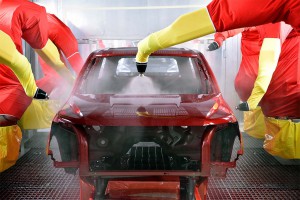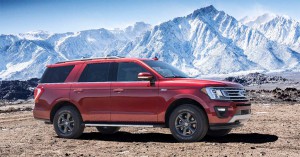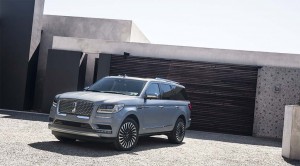With SUVs now accounting for half of the U.S. new vehicle market, Ford Motor Co. is investing $25 million at its Kentucky Truck Plant to boost production of its big Ford Expedition and Lincoln Navigator models by 25%.
The project, which follows a $900 million update of the Louisville factory, introduces an array of high-tech tools, including 400 new robots, as well as a 3D printer that will allow workers to make parts and tools on the fly.
“Using a combination of Ford’s advanced manufacturing and American hard work and ingenuity, we’ll deliver more high-quality Lincoln Navigators and Ford Expeditions to customers than originally planned,” said Joe Hinrichs, Ford’s president of Global Operations.
Ford recently launched all-new versions of both full-size SUVs – their first complete makeover since the late 1990s — and the response has been what Hinrichs described as “exceptional.” Notably, the high-line Lincoln Navigator was named North American Truck of the Year by a jury of 60 U.S. and Canadian journalists last month, while the Ford Expedition was a runner-up.
(McConaughey hyping new Lincoln Navigator. Click Here for the story.)
Ford needed to make a major tear-up of the plant to accommodate the shift from traditional steel bodies to an “aluminum-intensive” design. That strategy was first introduced on the latest-generation Ford F-150 pickup as a way to boost both fuel economy and payload capacity. The Navigator and Expedition share the same underlying platform as the truck line.
The latest upgrades make the Kentucky Truck Plant one of the most highly automated facilities in the U.S. auto industry. And the investment is expected to pay off rapidly as Hinrichs noted that the two big SUVs have some of the highest profit margins of any vehicles in the automaker’s North American line-up.
“It’s really important that this plant is able to produce more because we know we have this high demand now,” Hinrichs said during a media tour of the plant in Louisville.
The latest version of the Navigator starts at $72,055 and can run to $100,000 when fully loaded. With sales up by triple digits, it is going out the door with an average transaction price running about $21,000 higher than the old model generated a year ago – largely due to strong demand for high-line Black Label and Reserve versions of the truck. Expedition, which starts at $51,695, has delivered an initial 57% sales jump and seen its average transaction price rise $7,800 as demand has grown for its high-trim Platinum edition.
(Click Here for more about Lincoln’s NACTOY victory.)
Light trucks, in general – including utility vehicles, pickups and vans – now account for almost two-thirds of the total U.S. new vehicle market, with both truck-based SUVs and car-based crossover-utility vehicles together generating half of all sales. And the upward trend is likely to continue, Hinrichs recently told TheDetroitBureau.com.
Since launching the two new SUVs last year, Ford has been “straining” to meet demand, Mark LaNeve, Ford’s U.S. sales chief, said during a conference call earlier this month.
That said, the question is whether the automaker can maintain the current, strong demand. It helps that the large SUV segment is growing, but Ford is up against some tough competition from General Motors, which has traditional dominated both the mainstream and luxury niches with models like the Chevrolet Suburban and Tahoe, and the Cadillac Escalade. GM has launched $5,000 incentives to try to hang onto market share.
Fiat Chrysler Automobiles, meanwhile, is working up a larger version of its popular Grand Cherokee SUV. But the Jeep Wagoneer and Grand Wagoneer models won’t be in showrooms for at least another year, according to company sources.
Ford currently operates two plants in Louisville, both producing truck lines. The tear-up at Kentucky Truck is being described as the biggest since the factory opened.
Ford’s classic truck-based models – including Expedition, Navigator, F-150 and bulkier F-Series Super Duty – generate the vast bulk of the company’s gross profits, so boosting production could be critical in a year in which CEO Jim Hackett recently warned of a decline in net earnings.
(For more about the new Expedition, Click Here.)
The anticipated revenues will also help Ford cover the cost of the carmaker’s battery-car and autonomous vehicle programs. Hackett has promised to rapidly expand those projects but it is unclear when they will begin to pay back the billions Ford plans to invest in them.




